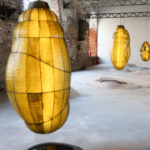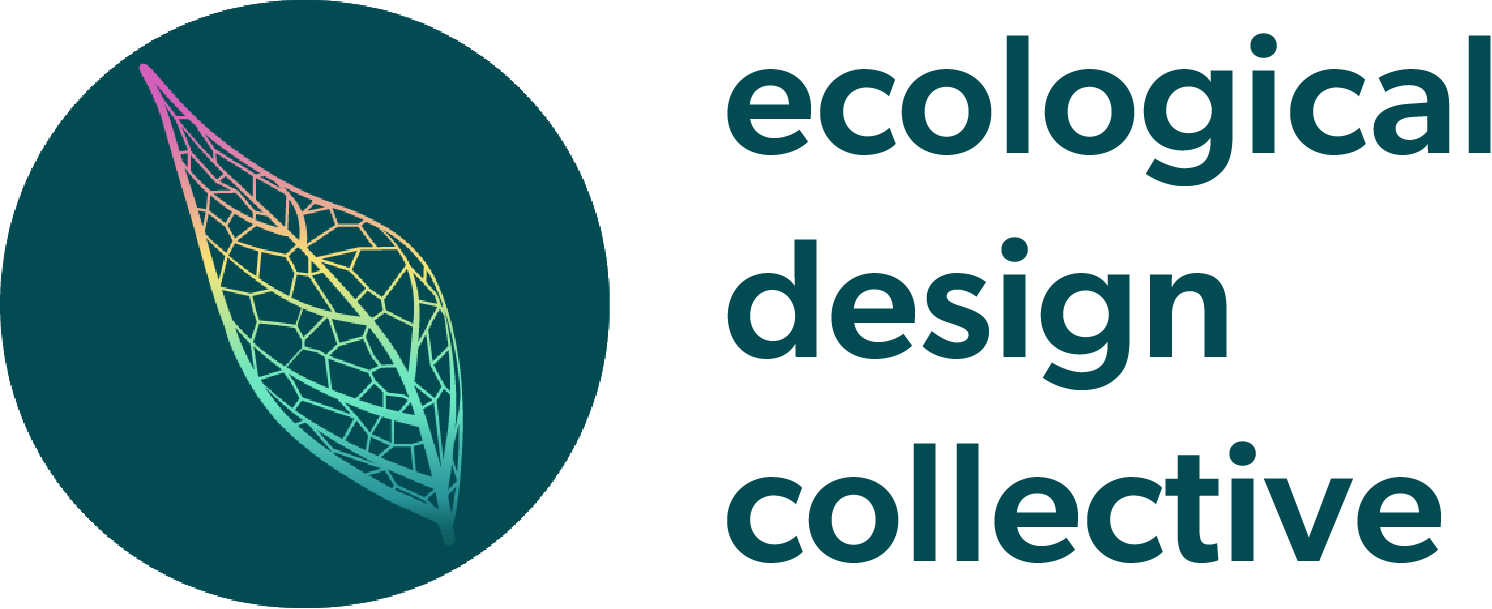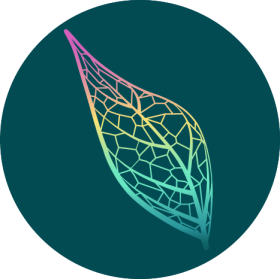-
Jonas Johnson posted an update in the group
a year ago ECO-ARTs
ECO-ARTs Had a great time with @kroome , @Marina , and @Alaa checking out the ECo Art Walk at Georgetown University on Friday! I’m dropping some thoughts below, and I uploaded some pics in the “albums” tab of the group. Looking forward to the next museum/ exhibit visit soon!
The exhibit featured “digital paintings” that are part of the series “Environmental Graphitti” by artist Alisa Singer. They were hung outside classroom spaces, in hallways and study areas. The basic process was to use a graph of science data as a template for a more abstract rendering; each installation had a corresponding graph with detailed source information and explanations.
We had some pretty mixed critical takes on the work as a whole. To lean into the critical: It was both too didactic and not didactic enough; there was both too much AND too little correspondence between the data on the climate data and the finished work. The wall texts were necessary to “make sense” of the resulting abstract imagery; and the abstract image on its own did not really communicate the “stakes” of the data it depicted. And—particularly irksome for me, for some reason—in one of the wall texts we learn that the artist has trademarked her method (“Environmental Graphitti (r)”)… which to me highlighted the misuse of the subversive resonance of the term “grafitti” when what is produced resembles corporate art (I’m imagining these fitting quite well in the corner office of a self-congratulatory Apple VP of sustainability), rather than something that truly intervenes in public space, forcing the passerby to recon with the impending climate catastrophe and troubling the role of capital/ property ownership/ crumbling infrastructure in producing it.
More charitably, however—many of these abstract images were in the hallways of sciences classrooms, and we saw their (comparatively) dry project/ research presentation posters hanging in the hallway. We discussed for quite a while how these abstractions and, really, quite pleasant and visually striking paintings might provide some inspiration to sciences students and researchers to think about the broader viewership of their work. Marina mentioned an interesting presentation from a philosopher of science, who explained that many theories in physics fundamentally depend on images/ renderings in order to be articulated and thought of. What sort of potentials might these images open up in these spaces?
We also compared these digital paintings to the trend of knitting enthusiasts making “climate scarfs”—in which climate data is visualized through different colors of yarn, each line representing a week, month, year, hundred years, etc. One thing that I feel makes climate scarfs different is the emphasis on replication, community, and embodiment. Climate scarf enthusiasts encourage other knitters to take their own locality’s historical climate data and knit scarves of their own, in the process not only visualizing but internalizing, through craft, the slow crawl of climate change—line by line, stitch by stitch. It thus becomes a form of communal experience that is productive of awareness and shared commitments; a folk form that tends towards incorporating new practicioners into a community of practice. The medium of digital painting for visualizing ecological collapse does not seem capable of instilling the same sort of contemplative, practice-oriented knowledge in the producer, nor does Singer seem that interested in forming a dynamic community of EcoArtists. I mean, I’d try out environmental graphitti myself—if I wasn’t so worried about a copyright lawsuit….
earthcommons.georgetown.edu
ECo ArtWalk - The Earth Commons
Environmental Graphiti: The Art and Science of Climate Change Environmental Graphiti—The Art of Climate Change by ECo Artwalk featured artist Alisa Singer uses abstract images to illustrate the science behind the critical changes impacting our planet. The series consists of digital … Continue reading
2 Comments-
@Jonas – What a great report of our day at EcoWalk in D.C. ! – and an even better critique of the various questions, comments, ideas and insights that were generated from the experience. Art, even if it’s not very good art – (and that too, as you rightly observe, is subjective) through its very physical and experiential nature provides an ‘apparatus’ (is the word maybe?) that visual “thing” to respond to. Does it get its message across? To whom? Does it have an impact? Is some art more impactful that others? if so, why? I am not sure we have the answers yet. But I think we are on to something. As we continue this journey & take in a few more experiences, visit a few more places – we might be able to refine these questions and generate some answers.
I’d like to invite more of you who are reading this now – to either join us on our next adventure – (the next one will likely be in NYC) – or organize your own, wherever you happen to be & tell us about it here. As we gather more and more experiences, with this eye toward the potential for visual art and environmentally sustainable futures, we may just formulate something – maybe the outcome will be a book or an article – or a film – or an artwork, who knows? But let’s give it a try! -
-



